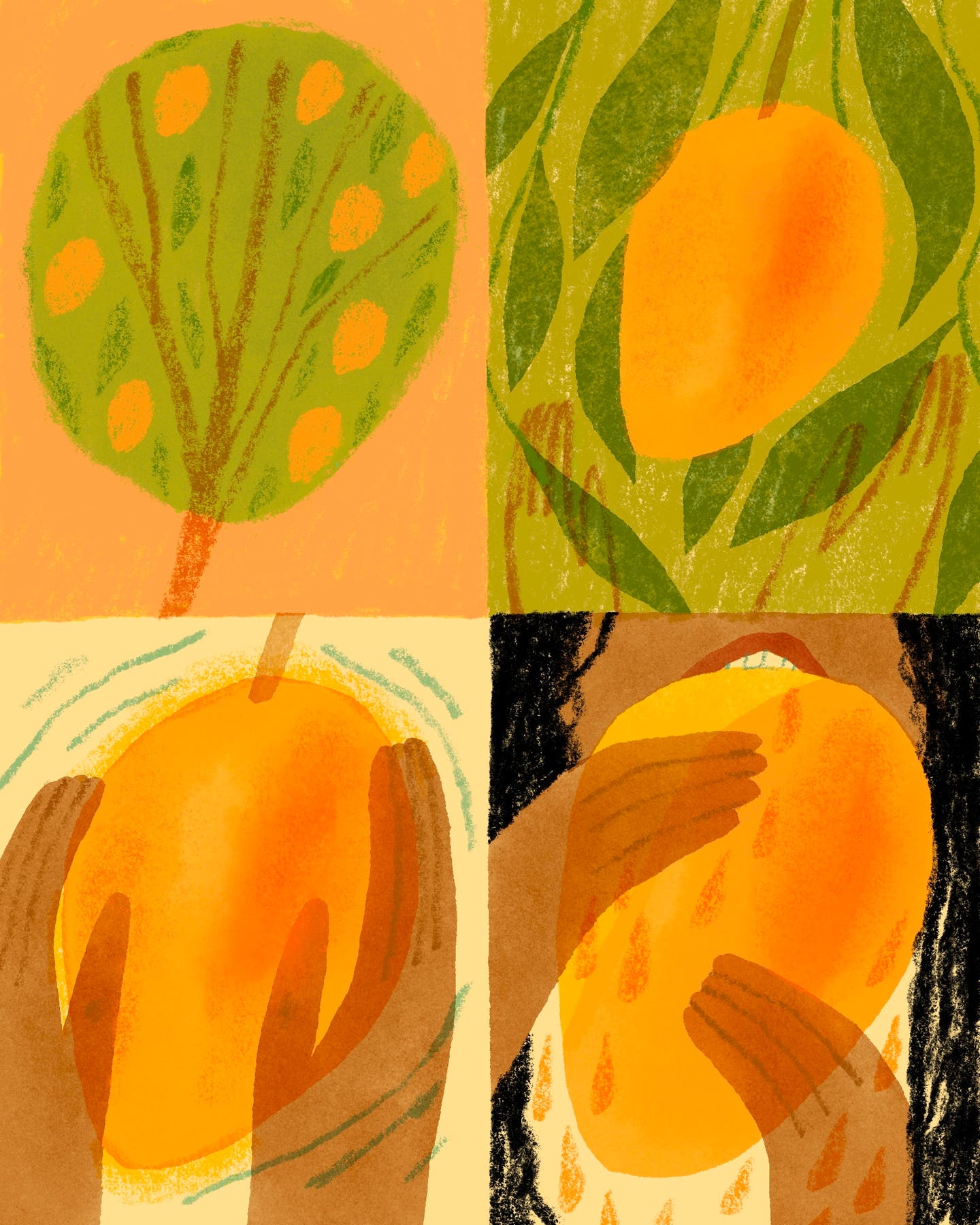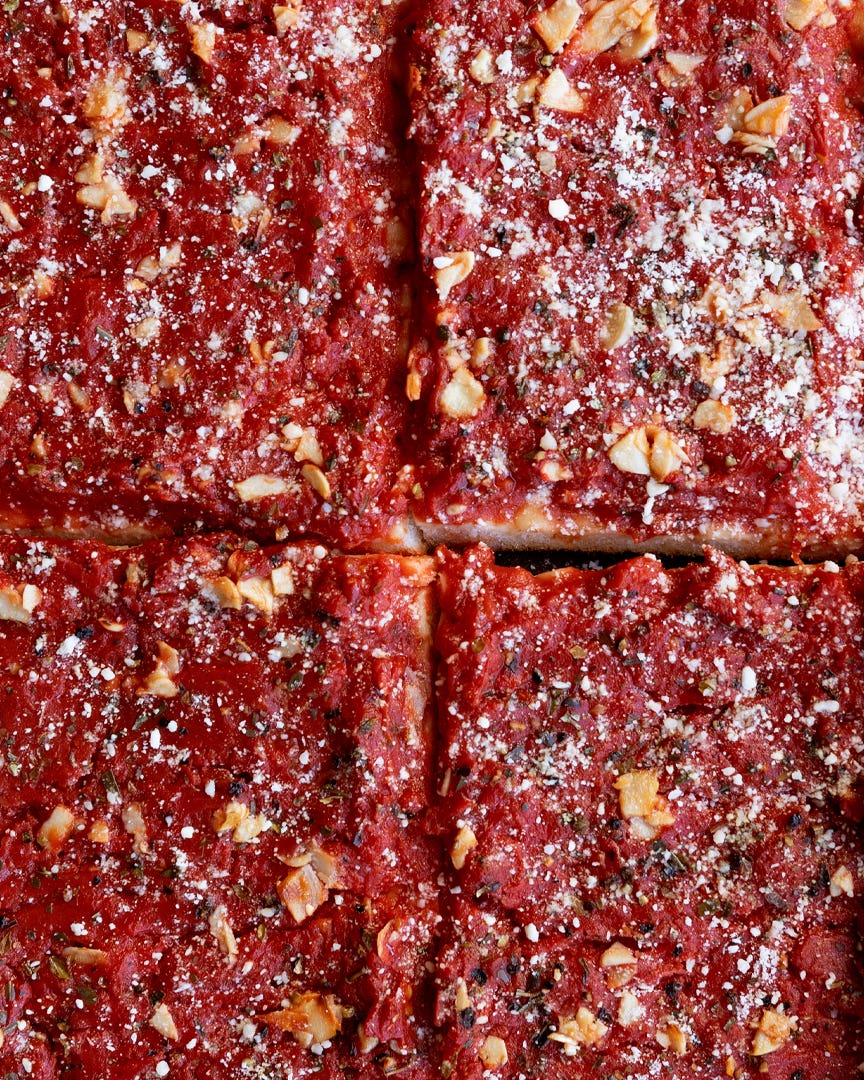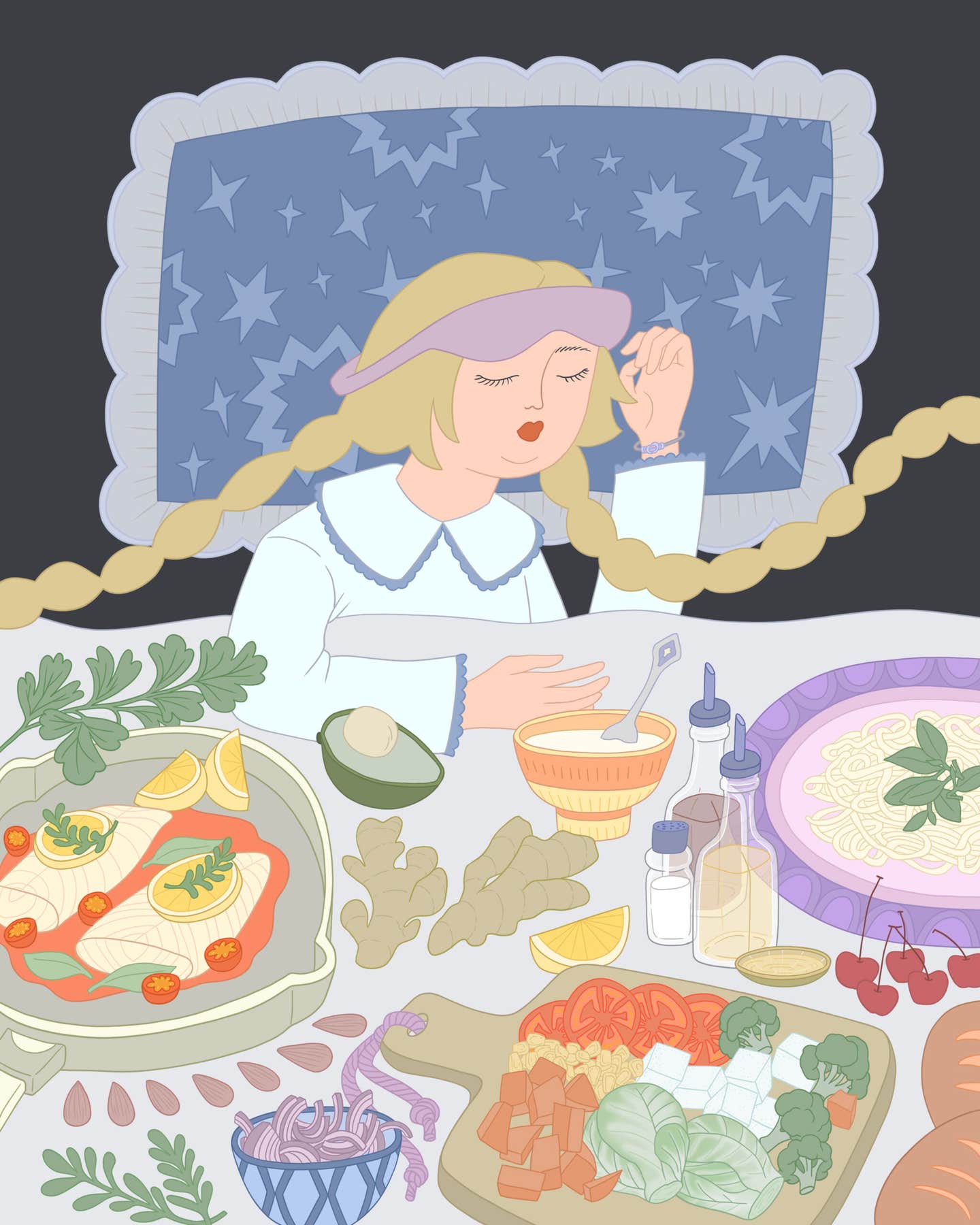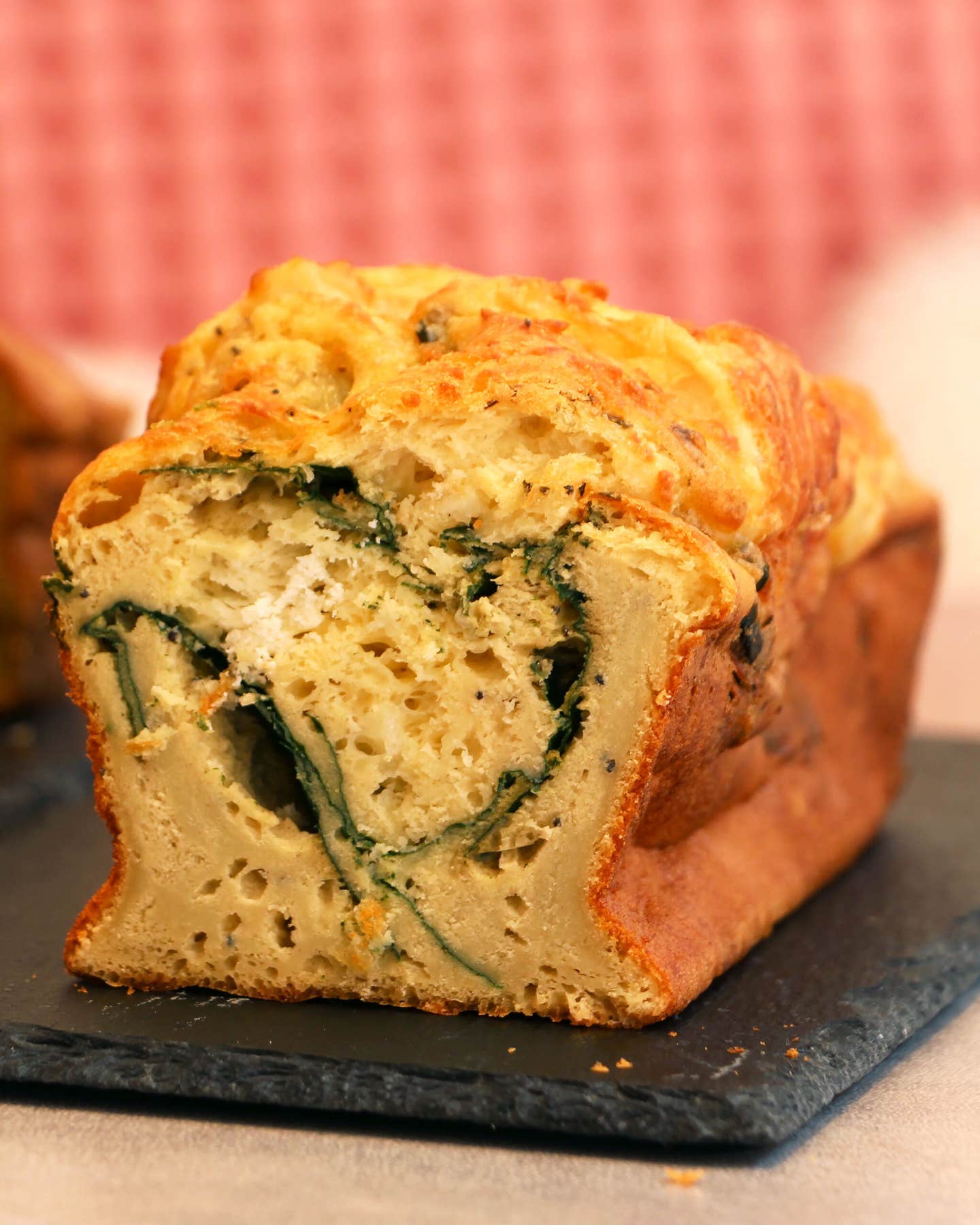
I first encountered “savory cake” as most French people do: at an apéro dînatoire, a boozy buffet-style dinner of room-temperature offerings. On the table were a number of unfamiliar dishes—I recall a cold rice salad studded with bright pink surimi and dainty plastic verrines of layered vegetable purées—but one was a revelation: a loaf cake filled with black olives, shredded deli ham, and hunks of barnyardy goat cheese. They told me it was cake salé ("savory cake”), and with one bite, I was hooked on its tender, olive oil-scented crumb.
When you hear the French 101 word “gâteau,” you probably envision architectural pâtisserie marvels, but le cake is far humbler. The sweet versions are domed loaves that are often glazed with lemon or marbled with chocolate, while the savory iterations are filled with meats and cheeses, perfect for lunches and picnics.
In the 16 years I’ve lived in France, I've encountered many such casual cakes, but while quiches have become a Starbucks mainstay and savory tarts like pissaladière have starred on Food Network, le cake salé is nowhere to be found Stateside.
I'm not the only one who's noticed a dearth of this delight. “I don’t get it,” says author and French pastry eminence Dorie Greenspan, who has included a savory cake recipe in nearly every cookbook she’s published in the last decade. “It’s easy to make. It keeps well. And once you have the basic recipe, you can add whatever you find in your refrigerator or pantry.”
Indeed, le cake salé is a testament to what Aleksandra Crapanzano, author of Gâteau: The Surprising Simplicity of French Cakes, considers a characteristic frugality in French home cooking. It isn't so much about the cake itself as it is about the add-ins: sun-dried tomatoes and goat cheese in Provence, perhaps, or Reblochon cheese and lardons in Savoie. (Or, more pragmatically, chopped-up leftover roast chicken, or cubes of those past-their-prime cheeses kicking around the fridge.)
But cake salé wasn’t always an anything-goes blank culinary canvas, according to French baker and cookbook author Sophie Dudemaine. When she discovered the dish in a magazine in 1998, there was only one type French people were making, filled with olives and ham.
Dudemaine saw huge potential in cake salé, but she didn’t dig that recipe, which turned out a dry, one-note brick. So she got to work, first reducing the flour, which made the cake less dense. Then she swapped the butter out for sunflower oil, which resulted in a moister crumb. Finally, she turned to the fillings, where she really let her imagination run wild, developing versions filled with melty raclette cheese and bacon or seasonal creations with chanterelle mushrooms and asparagus. Bonus: She could fit far more loaf tins in her oven than pie pans, which led her to abandon the idea of selling savory tarts at the local market in favor of the rectangular cakes.
A decade later, Dudemaine had enough loaf cake recipes to fill a cookbook. Les Cakes de Sophie, published in 2000, sold over a million copies. The media dubbed her the French Martha Stewart, and suddenly savory cakes were omnipresent on French tables. Twenty years later, they still are: The 2022 edition features 100 recipes, most of which are new (think cake salé with rabbit in mustard sauce, a nostalgic French favorite revisited in a new format).
Most French cooks don’t know the debt they owe to Dudemaine. And yet, despite the unabating cake salé craze back in the Mother Country, the dish has hardly leapt its borders. This cake-shaped hole Stateside may have less to do with the dish itself and more to do with when it’s traditionally served. In France, wedges of savory cake are a mainstay of the aperitif, the course of pre-dinner drinks and nibbles so sacrosanct it’s protected by UNESCO. Americans love their cocktail hour, but there’s simply no U.S. equivalent to the French apéro.
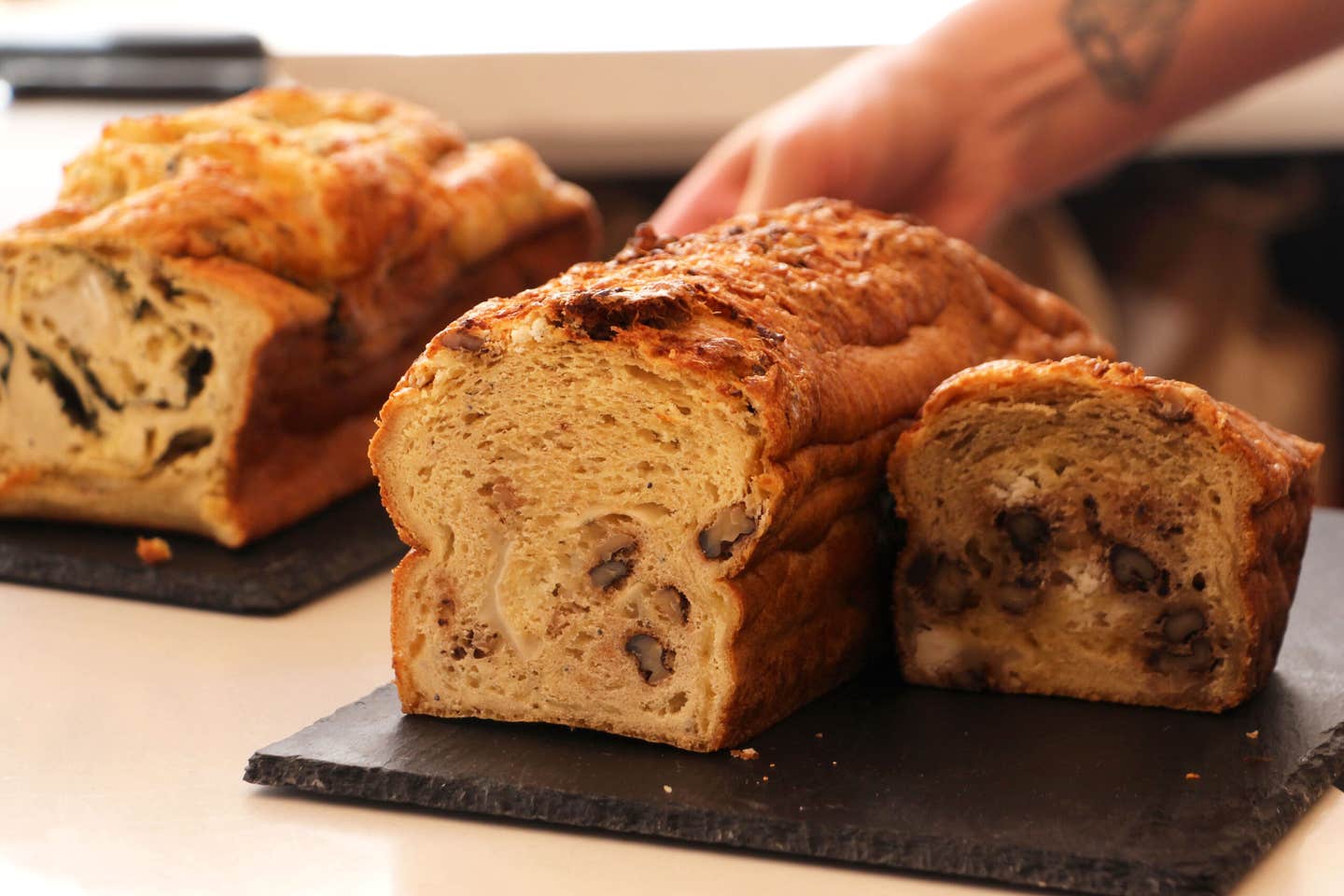
Beyond divergent mealtime traditions, cake salé has a visibility problem. Unlike their sweet counterparts, savory cakes are glaringly absent from French bakeries and restaurants both in France and abroad. “I’ve never seen a savory cake outside the home,” says Crapanzano. That means even the most adamant visiting Francophile would struggle to catch a glimpse of the dish, let alone taste it.
“Unless you’re close enough with a French person to be a frequent houseguest,” she says, “these are things that you would never know about.” French dinner invitations tend to be hard-won, following weeks or months of meeting in bars, cafés, and restaurants—and even then, it would likely take several such meals before you could be served what’s essentially upgraded leftovers.
But there’s hope for the savory cake seekers among us, whether a trip to France is in the cards or not. Recipes by Greenspan and Crapanzano abound; some are filled with Roquefort and walnuts, while others toss in chorizo and crumbled goat cheese.
Back in France, there are signs that cake salé is finally beginning to fly the nest. Recently I glimpsed shrink-wrapped tomato-feta cakes in the apéro aisle of my local Monoprix, and two savory cakes have popped up on the menu at the Marcounet, a floating bar on the Seine.
Paris even has a new bakery, CakePart, that’s dedicated to "les cakes" both savory and sweet. The owners, Sarah Zerbib and Margaux Sodoyer, say the business is an homage to their childhood love of cake: the vanilla-scented ones Zerbib’s mother made for four o’clock goûter, or the chocolate ones Sodoyer’s mom brought to weekend meals with extended family.
Each day, in addition to these sweeter offerings, CakePart bakes off a handful of cakes salés, whose ingredients vary seasonally: In winter, butternut squash may dot the batter; in summer, tomato and eggplant peek through the crust. “We see it as a ‘fast good’ meal—one with healthful ingredients, but where you don’t necessarily have to go sit in a restaurant for hours to eat,” says Sodoyer.
Americans may never fully embrace the French apéro, but savory cake is a gateway to its palpable joie de vivre, whether you serve the dish for lunch or brunch (which Greenspan recommends) or take it on the go. Crapanzano rightly points out that savory cakes keep longer and hold up better than most sandwiches, making them perfect for hikes and picnics.
Regardless of the occasion, you’ll want to keep a few tips and tricks in mind when making cake salé. Crapanzano says full-fat buttermilk is your best bet for achieving a moist crumb. A tablespoon or two of extra olive oil ensures the cake remains moist even when the add-ins are on the drier and less fatty side. Filling-wise, three cups is a good amount to add to the batter to ensure each bite marries rich, eggy dough with pleasing pockets of texture.
“I say, open your fridge. Now that you have the base, add whatever you like,” says Dudemaine. Greenspan agrees: “It’s the kind of thing where if you make it and love it, it can become yours.”
Recipe
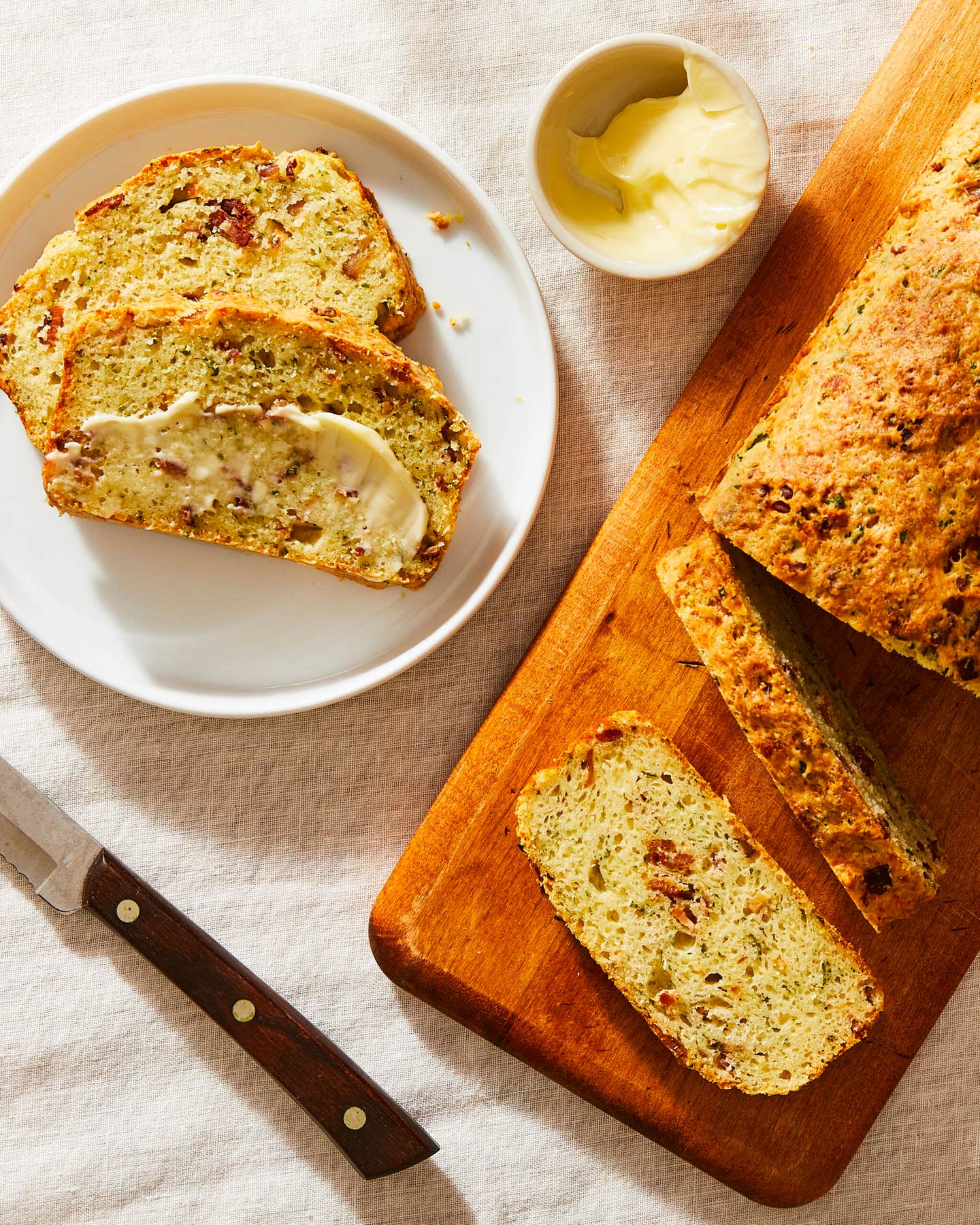
Keep Reading
Continue to Next Story
